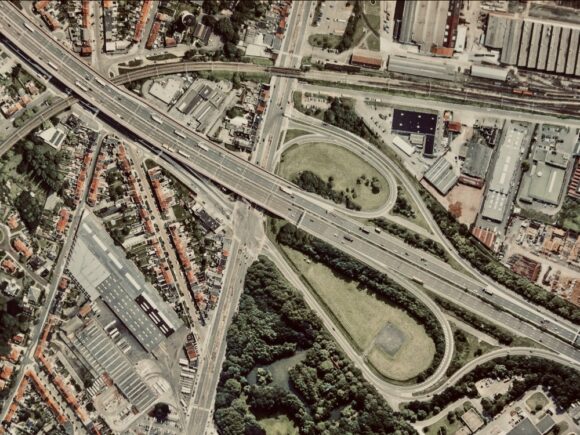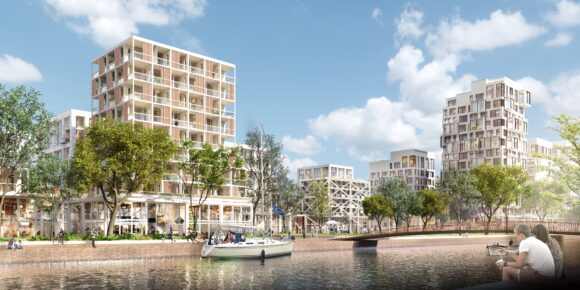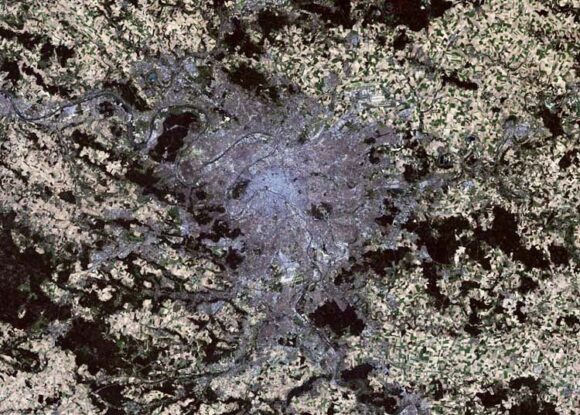
The race to achieve zero emissions by 2050 is the greatest challenge humanity has ever faced. We have finally started to realize this and have begun enacting laws, putting in place financing mechanisms, and developing technological and practical solutions.
Urban policy is without question highly mobilized toward the Net Zero objective. But for urban planning and design the question is more difficult to grasp. In this article we address the question of how Net Zero affects the physical configuration of the city. Or asked another way, what does a Net Zero city look like?
People who write institutional communications love to say that cities count for 70% of greenhouse gas emissions so they need to be a major part of the solution. But once you have said that you really haven’t said much. The truth is that in most places the key levers of the Net Zero transition – energy, transportation, industrial, and agricultural policy and regulation belong to national or state authorities. So how exactly is Net Zero an urban issue?
Hillary Angelo and David Wasmuth have broken down how we got to the current ubiquity of the idea that cities “are the most likely solutions to our global environmental problems” in their article “Why does everyone think cities will save the planet?” They explain how this idea is driven by, among other things, “something close to a policy consensus around the idea that urban density has environmental value.”
But that still doesn’t help us progress much to what is a Net Zero city and what cities can do to get there. Anu Ramaswami of Princeton University offers the definition of a Net Zero City as “one that has net-zero carbon infrastructure and food provisioning systems.” From there the discussion becomes one of quantifying emissions and putting in place measures to reduce them, as translated in the carbon reduction policies and action plans of many cities.
To urban planners and designers these questions seem quite abstract and hard to translate into urban form. We can exchange our fossil fuel power stations for wind and solar farms, electrify the vehicle fleet, avoid concrete or use low carbon varieties when unavoidable, replace gas boilers with heat pumps, improve industrial manufacturing processes… none of this really requires physical changes in our cities.

As a result, much of the alignment to environmental objectives in urban planning and design is focused on other climate adaptation, resilience, biodiversity and wellness. I have seen very little compelling work on the impact of the Net Zero imperative on the physical configuration of the city.
But I’d argue that the genuine Net Zero city has distinguishing physical characteristics and that taking greenhouse gases out of our lives really changes how we plan and design our cities. I feel this question merits more investigation.
To begin, Net Zero implies a new relation of cities to space and land-use.
In highly-developed, low-growth economies, we can demonstrate that even with very reasonable optimization of existing urbanized land we can amply meet our needs for housing, amenities and infrastructure. Urban expansion has a significant greenhouse gas cost. Grading new land and building out roads and utilities is inherently carbon emitting – before we even get to building on it. We also know that an ever-expanding city is not viable from a network perspective – the costs of moving things along low-intensity networks (roads, pipes, wires, etc) is evidently not compatible with Net Zero emission.
This means our cities need to have defined boundaries beyond which they do not physically extend. This is an enormous change of paradigm that engenders real design and planning issues. The physical and highly practical question for urban planners and urban designers is how to densify: in what part of the city will we build and through which types of urban forms?
As a classic NIMBY issue, this is inevitably contentious. But environmentalists can no longer elude the fact that the greater environmental imperative is to block sprawl, not to maintain low density. Nor can they avoid the equity issues that in the absence of agreed orderly solutions it is the least powerful who will bear the cost of solutions that are not explicitly managed and negotiated.

The next question is how urban metabolism and the circular economy affects urban form. We can break the question down into two parts: 1) reducing the quantity of the processes of consumption and waste production and 2) optimizing the flows at an urban scale.
The first question boils down to how reducing, reusing, and recycling at an urban scale impacts urban form. I won’t go into that exhaustively here, but it seems to me there are many obvious implications. One is that the reuse and recycling of urban infrastructures and building structures means that urban form needs to be in ever greater continuity with the existing, as a creative re-adaptation of layouts and configurations rather than ex-novo urban designs. It also means we need to use design devices at the scale of the plot or the neighborhood to drive reductions in needs of all sorts. If we think about energy, this means generalizing bioclimatic design at an urban scale. These are just very high level indications of some examples. The point is to underline that there are extremely major impacts of a Net Zero mindset on urban form.
The last point I’d underline has to do with urban flows. I think back to the amazing work by Pierre Merlin I avidly absorbed during my studies in which he quantified and mapped transportation flows in the Paris regions (Transports parisiens, étude de géographíe ćonomique et sociale, 1977). If we revisit that approach today with urban metabolism with net zero emissions in mind, we have a clear objective function that can help us find a higher level of efficiency in urban flows. One fascinating aspect of this is how we can reuse legacy urban transportation infrastructure, such as mammoth highways, rendered largely functionally unfit for purpose given changes in mobility technology. Again, I won’t peel back the onion on all the consequences, but I believe we can safely conclude that in the area of mobility Net Zero has a very significant impact on urban form.
I find the urban planners have a lot more ease absorbing other environmental imperatives, like biodiversity, resilience, well-being, in their practical work and are tempted to think of Net Zero as a matter of urban policy rather than urban form. I, on the other hand, believe that Net Zero is a very considerable driver of urban form. Although I have only begun in this article to draw out the nature of this impact, I believe it is a very fertile area of work for urban planners and designers and look forward to exploring and implementing this as we contribute, in our professional field, to meeting the greatest challenge humanity has ever faced.